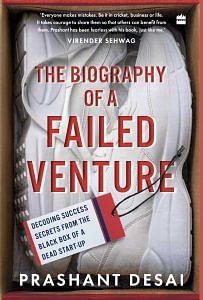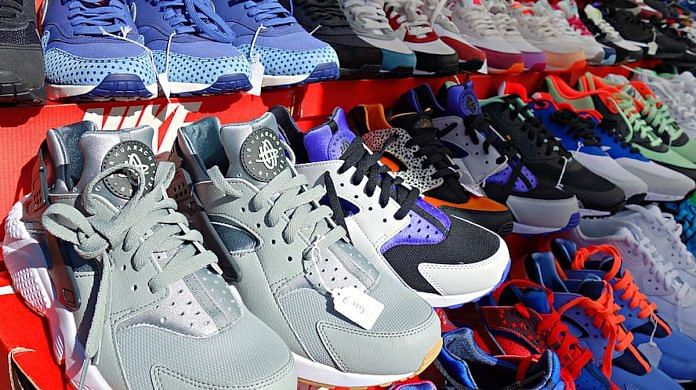My engagement with Kishore Biyani was one of my more enriching experiences.
He had mapped the Pantaloons/Central/Big Bazaar consumer to be able to predict what he or she would buy given his/her income. He would travel economy class to observe what his target audience would be wearing. He would examine colours, apparel, bags and shoes, drawing up a mental index of what those people would be earning, what kind of homes they would be living in, what kind of surpluses they would be generating and what they would be likely to spend on. He could ease into the shoes of consumers and think like them. Never was he arrogant enough to think ‘I am my own consumer, so I know best.’
All these observations went into the melting pot of his mind where he arrived at a simple understanding: at what price would he be able to sell what product, in what quantity, in which region and at what juncture.
I observed Kishore Biyani closely enough for years to tell myself that I understood that ‘software’.
So, while engaged in the pursuit of launching an honest Indian sports brand, I felt, I knew who my real consumer was. People like me, that is.
People compelled to buy a Nike or an Adidas at a five-figure sticker price because an alternative pair that met the mid-market consumer’s requirement was not available.
People like me who ran with a purpose in an India becoming increasingly conscious of health, fitness and wellness.
People like me who took pride in everything Indian.
Also read: New book has hidden success stories in a brutally honest account of a failed venture
So, every question that I would have asked a potential customer in a random sample survey, I asked myself: ‘Would you, Prashant Desai, have brought a sports shoe for Rs 3,000 that was not as large a brand as a German or American icon but priced a third of that?’
‘Would you, Prashant Desai, have brought a sports shoe positioned as the Next Big Indian Thing serving a market ignored by German or American brands?’
‘Would you, Prashant Desai, believe there are thousands of Indian consumers like you who will be keen to buy into a new sports shoe and apparel brand?’
The answer in each case: ‘Yes.’
This was an India comprising people like me. People who had grown from middle-income families. People who aspired for the better. People who felt a deeper national pride to buy things Indian and world-class.
The time had come.
I didn’t need to validate my conviction with anyone to appraise whether I was headed in the right direction. Those I had spoken to had been captivated by the passion of my argument. Besides, Samir, whom I had taken with me on this reconnaissance (not from the shoe business), had been sucked into the excitement. This was going to be big, he had said.
Ironically, the contrarian was Kishore Biyani himself. I met him on the opening of their FBB store in Kolkata and relayed this thought to get his feedback, ‘Ek baar aur soch lo’ (think once more), he said. ‘I have done this sports shoe business in the past. It is not as simple as it appears. The power of global brands is large, and the Indian consumer is just not discerning enough.’
I had a ready answer for this (for myself, not him). Kishore Biyani was talking of a 2010 experience in 2017. He had done this business years ago when the Indian consumer was still maturing. The fitness revolution was then only picking up. Disposable incomes were not as high then as they were now.
Besides, Kishore Biyani didn’t run. He didn’t know the actual user; I did.
As a concession, I felt that if he had ventured into marketing sports shoes at this point – the way I was – he would have made a success of it.
‘The time is right,’ I said to myself, ‘to prove Kishore Biyani wrong.’
Also read: How Mukesh Ambani vs Jeff Bezos is becoming Vocal for Local, East India Co, Atmanirbhar battle
What Others Said
One of the first things I did was to test my hypothesis.
I showed the samples to my running friends. Their first reaction was a wow. They liked the colours, feel, technology and presentability. There was something else they said that sounded credible; they wouldn’t wear the shoes for the main events or long runs but would surely do so for practice runs.
Next on the list was Vinod Naidu, who had managed Sachin Tendulkar’s endorsement and business interests for more than a decade-and-a-half and was arguably India’s best sports marketing professional. Then on the list was Rajiv Mehta, credited to have built Puma India from scratch into an ~Rs 800 crore annual revenues company in under nine years. The next was Sanjeev Agrawal, my ex-colleague at Future Group and former MD and CEO of Skechers India (by then the fastest growing sports shoes brand in India).
I ran my marketing spiel with each: why India needed a world-class affordable sports shoe like ANTA that would be made for India by Indians; how there was a middle-market gap that needed to be plugged and how I had a product that would be affordable, attractive, available and accessible. Finally.
I showed the samples that I had brought from China. ‘Just Rs 3,000 for this,’ I would say as slowly as I could to maximize impact.
I met Vinod first at the Trident at BKC, Mumbai. Vinod got so excited by the time I had got to half my spiel that he wanted to be in on the business with me and whipped out his phone to call the legendary Indian cricketer and then the coach of Indian cricket team, Anil Kumble (who was a few rooms away at the same hotel), with these words: ‘I really think you should see this. Come right away!’ Anil Kumble was then the coach of the Indian cricket team. Through his sporting career he had seen and used several big brands. He looked at the shoes and apparel closely. He tried them on. He even went and brought his sports gear that he was using. I was nervous. He asked a few questions. And then Anil Kumble pronounced the verdict of ‘Nine on ten’, and said something else that made me smile on the drive back home as if I had discovered a 100-bagger (when a stock goes up 100x): ‘How can I get associated?’
Rajiv’s opinion I would value the most. The man was an achiever in the world of sports brands. Managing director of Puma India by twenty-seven. Understood brand building.
Understood India. Understood the consumer. Understood prices and demand. Understood where lifestyle aspirations were headed. Understood retail, distribution and online marketing. He too concurred. India was a country of 1.3 billion consumers and there was not a single sports shoe brand in excess of Rs 1,500 crore in annual revenues. Crazy. His words when he saw the shoe I presented in Bengaluru: ‘Looks interesting. Product ma dum chhey’ (The product has potential).
Also read: Amazon or Big Bazaar, Indians want low prices. Online retail must be a level-playing field
I was yet to hear a negative. Gradually, my guarded optimism was to turn into full-blown confidence. When I entered J.W. Marriott, Juhu, to meet my third screening filter, Sanjeev Agrawal, I was walking an inch above the ground.
Sanjeev red-flagged me. ‘It’s not as easy as you think,’ he said. KB (Kishore Biyani) had prospected the same business a few years ago with all its brand building, product understanding, retail network and procurement capabilities – and failed, he said. Sanjeev kept provoking: ‘Why should I buy your shoe for Rs 3,000 when I could buy an end-of-season sale Nike/Adidas/ Skechers/Puma for Rs 3,000 as well? Besides, yeh designs aur colours vaahiyaat hain (your designs and colours are ridiculous). Why would anyone want to buy a pink sports shoe? Only black, blue and grey sell!’
I countered that this was precisely the mental block we were fighting. Normal was boring; this was an India seeking to stand out. Sanjeev kept parrying: ‘You have not done your research of what sells and does not sell. Go to Reliance Footprint or Big Bazaar or even the mom-and-pop stores in Parel East or the Dadar market. You will get your answers.’
I quoted the Great Biyani: ‘Don’t overdo research. Shelf test is better than self-test.’ Sanjeev countered, ‘Bhai (Brother), do you have his capital and risk appetite?’  This excerpt from ‘The Biography of a Failed Venture: Decoding Success Secrets from the Blackbox of a Dead Start-up’ by Prashant Desai has been published with permission from HarperCollins India.
This excerpt from ‘The Biography of a Failed Venture: Decoding Success Secrets from the Blackbox of a Dead Start-up’ by Prashant Desai has been published with permission from HarperCollins India.



